Kaitiaki of a world-renowned wetland at the bottom of the North Island are excited about the return of a critically endangered bird, the matuku-hūrepo or Australasian Bittern.
Researchers listening for its distinctive booming call around the Wairarapa Moana wetlands say the population has doubled in the past decade - a sign of hope for the lake.
Arrive at dusk on a clear summer evening at Boggy Pond and the skeletal willows in the water are alive with spoonbills, their mullet-style head feathers and wide beaks throwing quirky shapes against the pinkening sky.
Swans float in pairs across the inlet and gulls and terns dive and cackle in the distance.

Boggy Pond, Lake Wairarapa Photo: RNZ/Sally Round
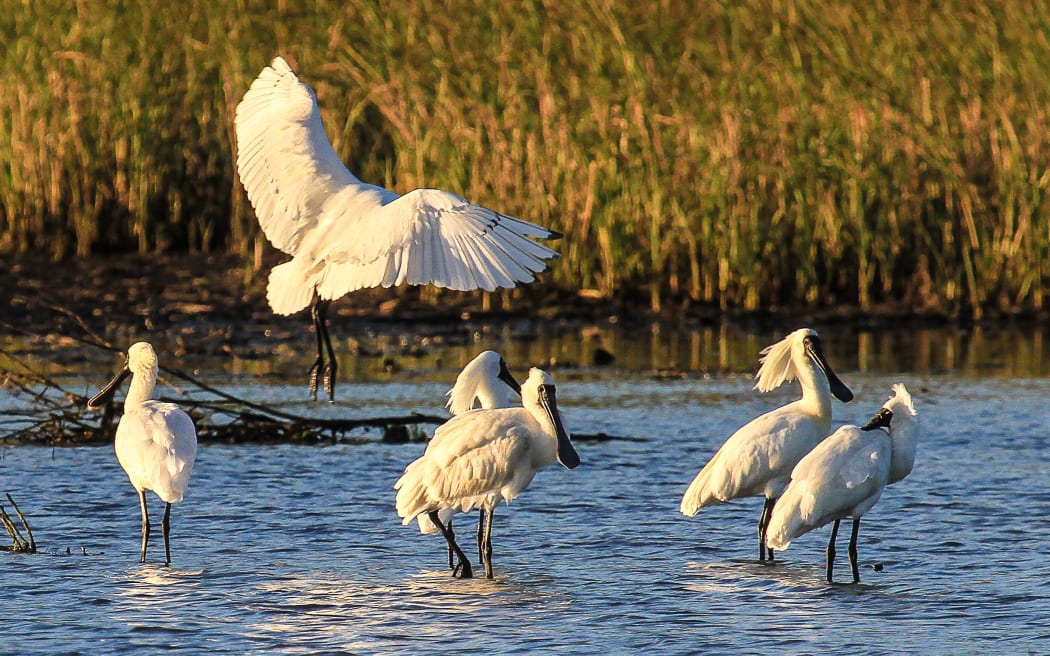
The eastern lakeshore at Wairarapa Moana Wetlands is a popular feeding area for migratory birds, including kōtuku ngutupapa (royal spoonbill). Photo: Pete Monk / Greater Wellington
The bittern is nowhere to be seen this evening but at last count it appears the matuku population is thriving.
Its whare is the raupō - bulrush - flourishing on the lake edge.
Watch out for something like a stick, Sarah-Jane Jensen urges as we make our way through the head-high thicket.
"They quite literally freeze, with their heads in the air, and they look exactly like a stick."
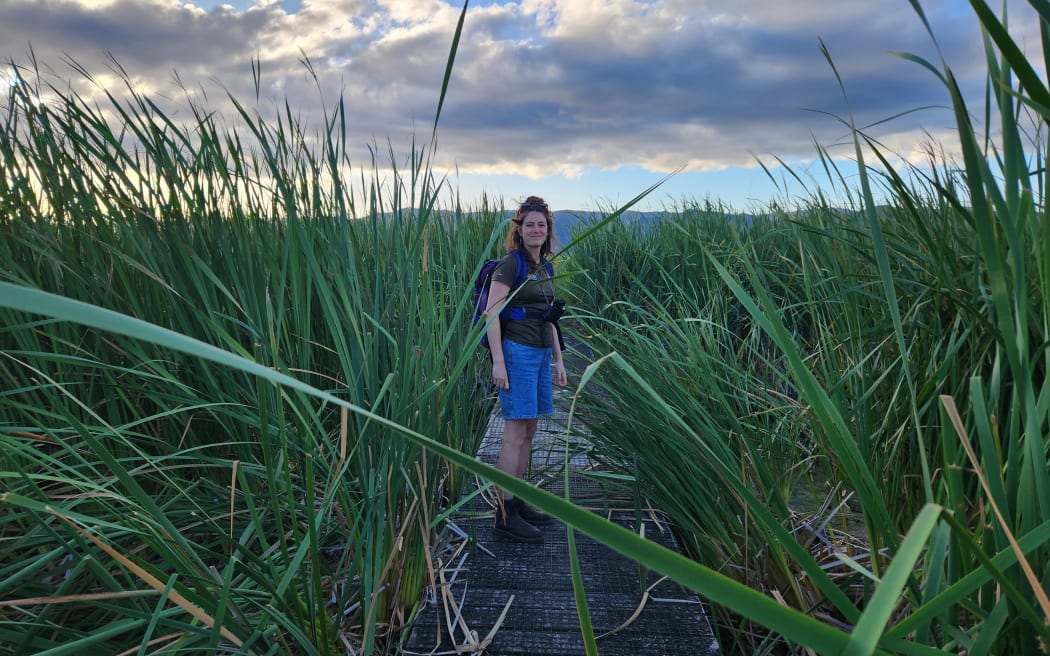
Sarah-Jane Jensen of Greater Wellington Regional Council among the raupō, a perfect hiding place for the Australasian Bittern Photo: RNZ/Sally Round
The biodiversity advisor for the Wairarapa Moana Wetland Project has only seen the bird three times here but she's heard it many more.
The birds' deep throated boom is made only by the males.
"I imagine that in the choir they would be the baritone or the bass," Rawiri Smith (Ngāti Kahungunu ki Wairarapa) told Country Life.
He said the matuku is often described as a lonely bird and referred to in waiata (songs).
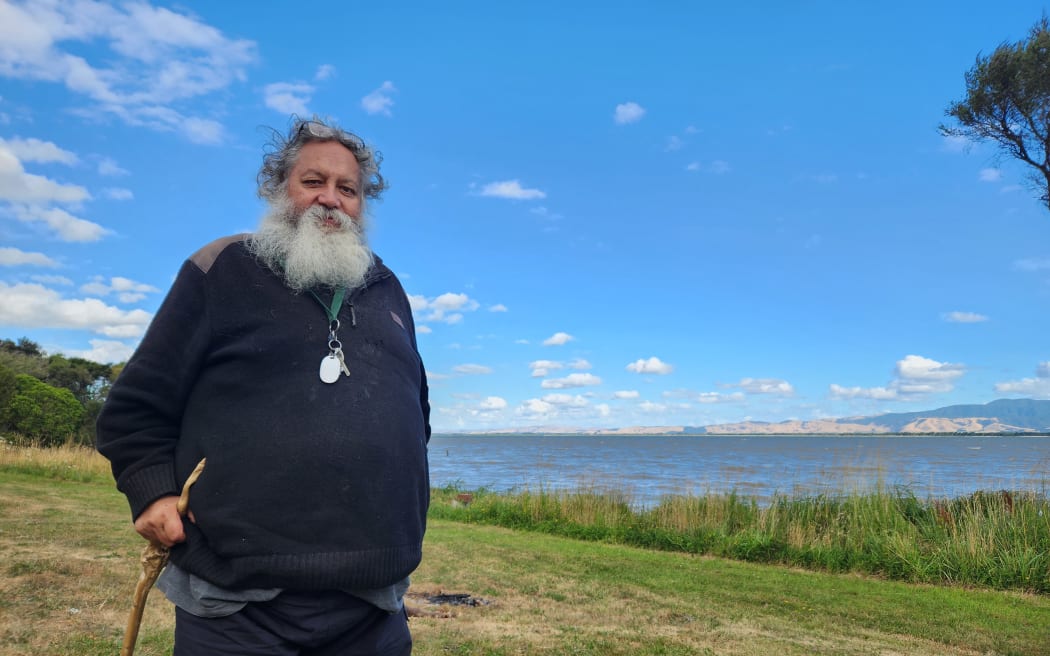
Rawiri Smith Photo: RNZ/Sally Round
Smith has been working with his iwi, along with Rangitāne o Wairarapa, the South Wairarapa District Council, the Department of Conservation and Greater Wellington Regional Council to protect and improve the moana under the wetlands project, set up in 2008.
The bittern are among 50 rare and threatened species spotted at the site which is among 2000 Ramsar sites
worldwide.
The Ruamahanga River, part of the network of waterways and lakes forming the moana, was diverted and stopbanked in the 1960s and 70s to ease flooding and allow farming around the lake.
Runoff from surrounding farms, pests and sedimentation are all threats to the habitat but it appears conservation efforts are working.
Greater Wellington's Senior Biosecurity Officer Steve Playle set up a network of hundreds of traps around the moana more than a decade ago and still maintains them.
"It's just a food bowl for predators really."
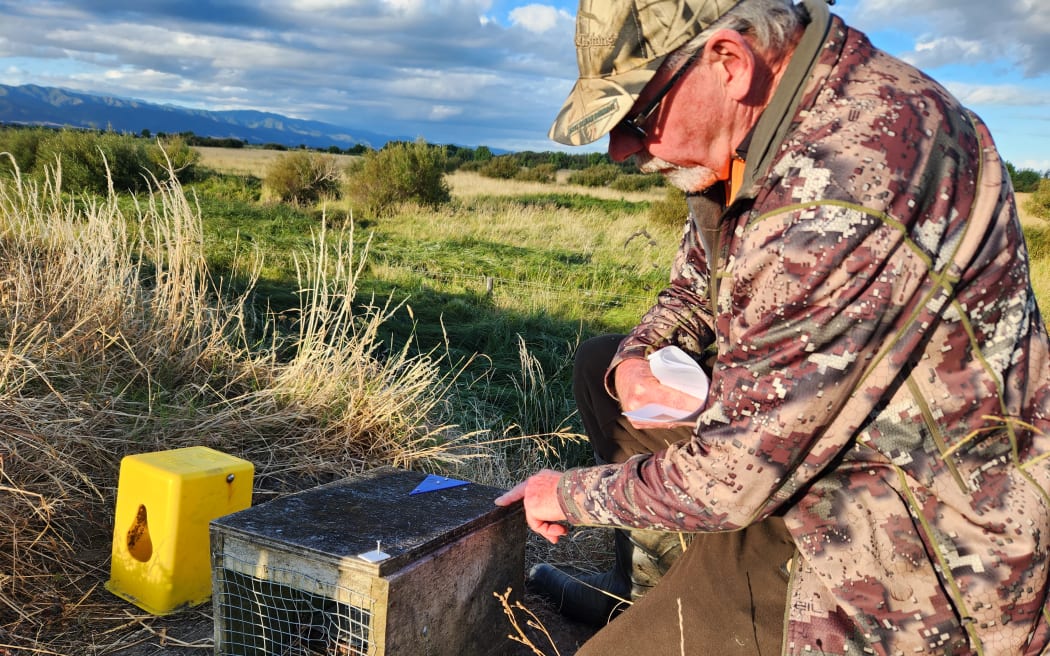
Steve Playle has been trapping pests and predators at the Wairarapa Moana Wetlands for more than a decade Photo: RNZ/Sally Round
The farmland surrounding the moana makes it easy for the pests including stoats, ferrets, weasels and wild cats to move back in.
The bittern nest among the raupō and are particularly vulnerable.
"It's taken us a long time to get the [pest] numbers down to where we've got them at the present point in time where I believe it's manageable, but you can't take your foot off the break," Playle said.
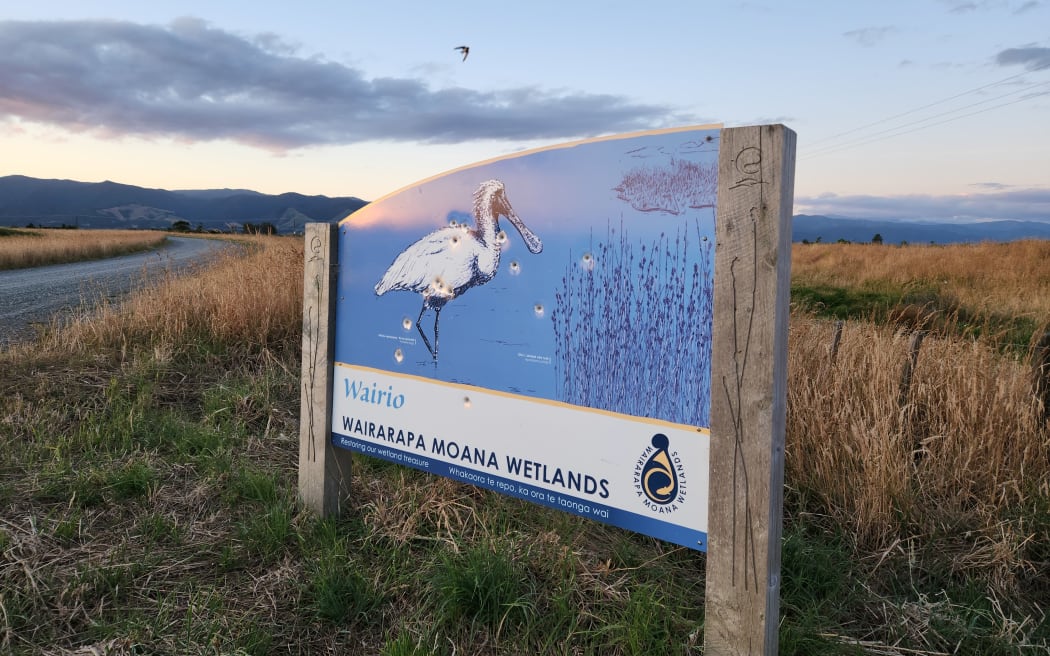
The Wairarapa Moana is one of more than 2000 internationally important wetlands worldwide and gained Ramsar status in 2020. Photo: RNZ/Sally Round
Smith said it's hoped the lake's return to iwi this year, under a settlement with the crown, after decades of degradation and alienation, together with conservation minded farmers and a motivated community will allow the moana to flourish again.
"We want to see the puāwaitanga (blossoming) ... so we can realise the potential of our lake."
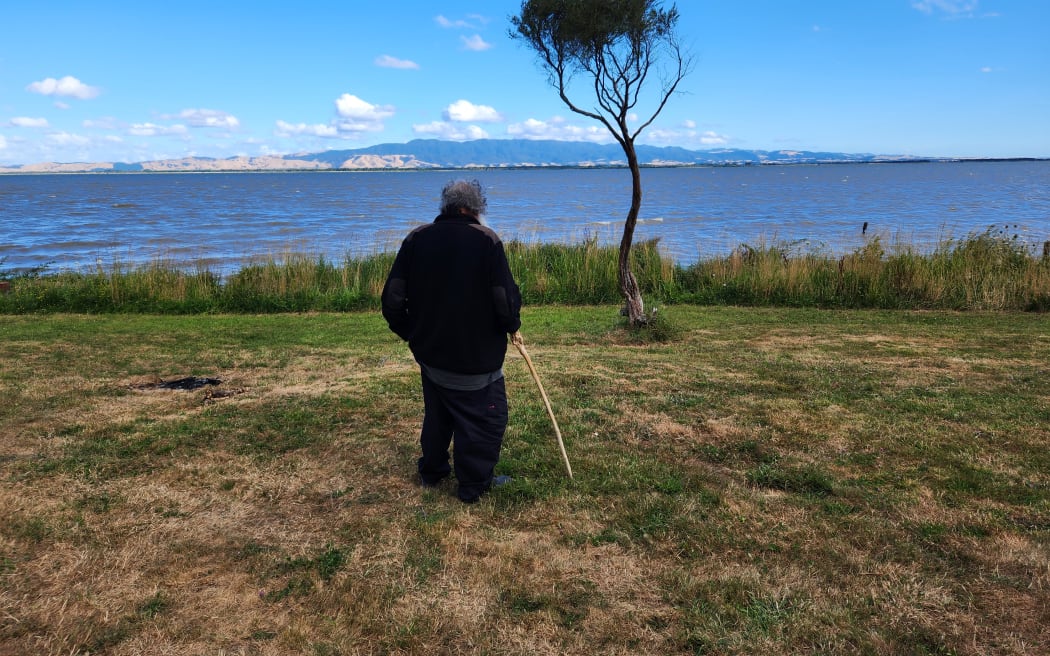
Kaiwhakahaere taiao, Rawiri Smith, looks out over Wairarapa moana from the western side of the lake Photo: RNZ/Sally Round
Video reproduced with permission from Jessica Wagner and Victoria University of Wellington. Jessica is using trail cameras to observe rat behaviour and inadvertently captured a video of a matuku-hūrepo.


